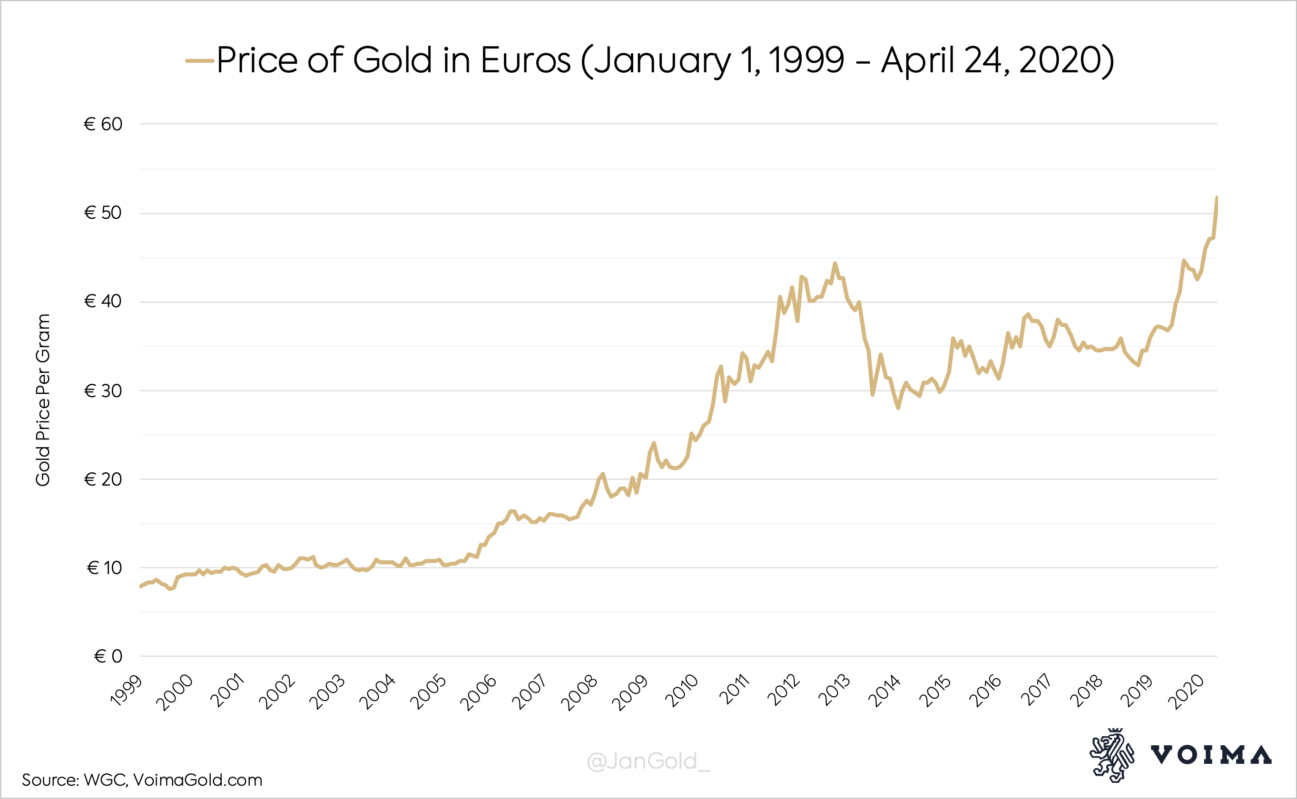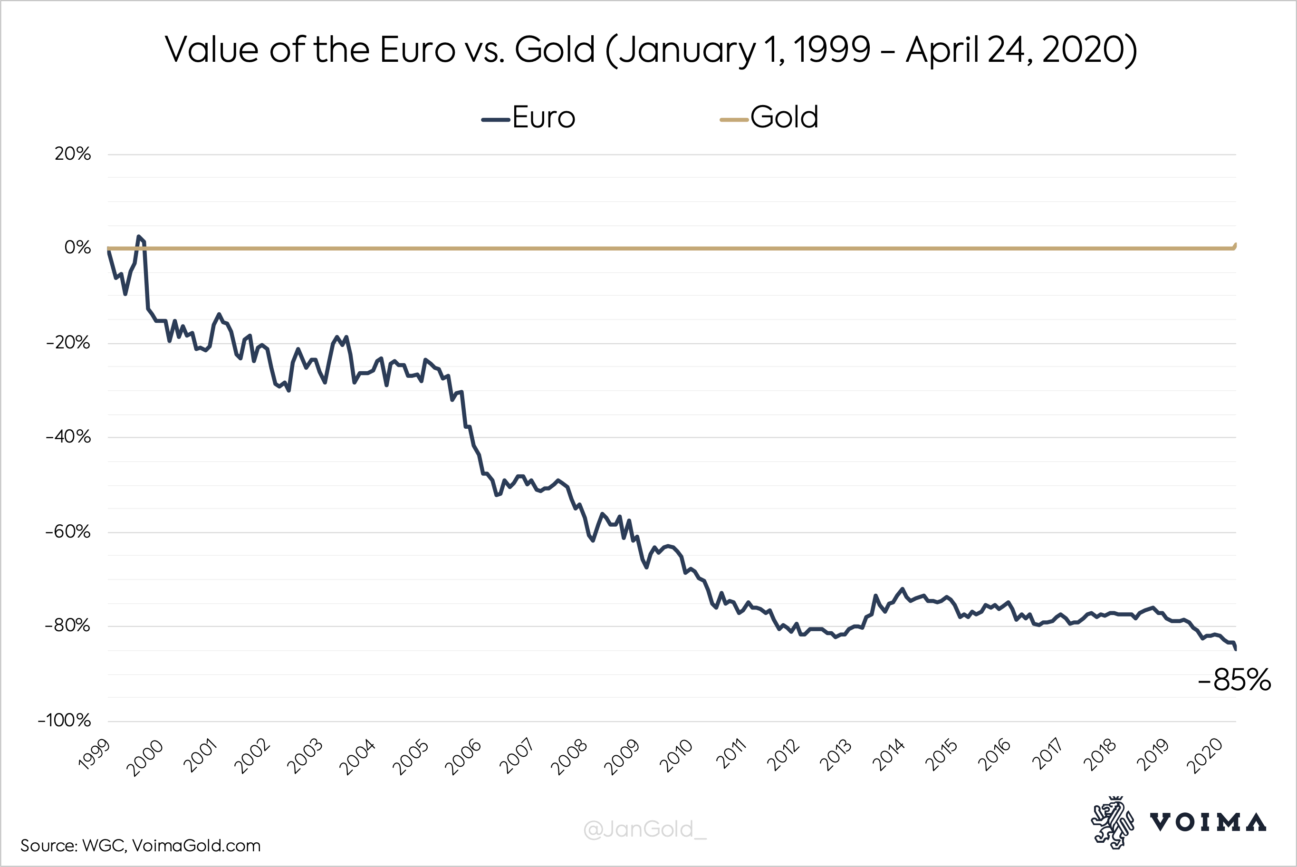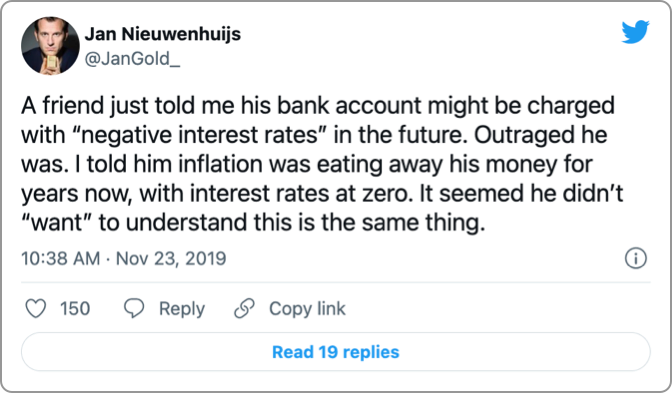Since its inception, the euro has devalued by 85% against gold
Jan Nieuwenhuijs
Gold Analyst
What price euro?
Technically, the euro was launched on 1 January 1999, although euro notes and coins started circulating in January 2002. The first gold price recorded in 1999 was €7,879 per kg—or €7.88 per gram (we'll use euros per gram as the gold price in the remainder of this article). By now, the gold price has crossed €51 euros per gram. A new all-time high.

Over the course of 20 years, the price of gold in euros has increased by 555%. From a historical perspective, the euro is a young currency but it has already lost 85% of its value against gold. This reveals the instability of fiat money.
To evaluate how much the euro has devalued against gold, you must measure it in gold terms (because a currency can't devalue by more than 100%). In 1999 it took 0.13 grams to buy one euro; today only 0.02 grams. The result is that the euro lost 85% of its value versus gold. In the chart below, you can see the euro's descent versus gold since 1999.

Purchasing power—lost or kept?
Measuring the value of currencies against each other is interesting, but most important is what this means for the purchasing power of currencies locally. The end goal of every participant in the economy is goods and services. What truly matters for a currency is its purchasing power. We will compare the purchasing power of euros versus gold in the eurozone.
Many people think that euros only lose purchasing power when a bank needs to be paid to store the euros; in other words, if the interest rate on a bank account is negative. This is called “the money illusion”. In reality, one has to subtract consumer price inflation from the interest rate, to arrive at the real interest rate. For the sake of simplicity, let's say the current interest rate for most savers is zero minus one percent inflation, that is –1%. Currently, euros approximately lose 1% of their purchasing power per year.

Now, let's have a look at gold. Over the past 12 months, the gold price has increased by 39%, making the total 38% after subtracting the 1% inflation. In one year, the purchasing power of gold has increased by 38% in the eurozone (minus storage costs, that is). However, the gold price doesn't go up by 39% every year; it can even go down for some years. Nevertheless, gold's purchasing power has greatly increased over the past 20 years, which is why physical gold should be seen as a long-term reserve asset.
To reveal gold's purchasing power in the eurozone, I have adopted an index. First, I divided the gold price by consumer prices and then created an index with a base of 100 in the year 1999. I have computed gold's purchasing power index for Finland, Germany and Italy. Because consumer prices slightly differ for the selected countries, the purchasing power of gold in these countries is not exactly equal. Though, I found gold's purchasing power is roughly the same for the entire eurozone.
First and foremost, you can see gold's purchasing power has increased in the eurozone since 1999. This means that the price of gold has outpaced consumer prices. From the index number, you can see that gold's purchasing power, on average, has increased by a staggering 350% (450% – 100%) over 20 years. The gold price can be volatile, at times, but over longer periods of time it preserves its purchasing power, with the benefit that it doesn't have any counterparty risk, so it withstands every crisis.
The views expressed on this post are those of the author and do not necessarily reflect the official views or position of Voima.
You are allowed to copy our content, in whole or in part, provided that you give Voima proper credit and include the appropriate URL. The name Voima and a link to the original post must be included in your introduction. All other rights are reserved. Voima reserves the right to withdraw the permission to copy content for any or all websites at any time.
Nothing written in Voima's blog or website constitutes investment, legal, tax or other advice. It should not be used as the basis for any investment decision which a reader thereof may be considering. The purpose of Voima's blog is to provide insightful and educational commentary and is not intended to constitute an offer, solicitation or invitation for investing in or trading gold.
